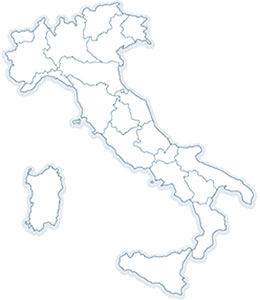Itinerary: Castelmagno, Pradleves, Monterosso Grana, Castelmagno, Chiotti, Chiappi
Castelmagno, discover all about this great Italian cheese
During this food & wine tour, you will learn about one of the most appreciated Italian cheeses called "
Castelmagno" (pic n°1, pic n°2, pic n°7). You will be able to discover the area it is made in, its history, its qualities, and the best way to taste it.
Where it is produced
The homeland of Castelmagno is a specific and limited area called "
Val Grana" (Grana Valley) (pic n°6) located in region
 Piedmont
Piedmont, north of Italy. Only in the villages of
Pradleves, Monterosso Grana, Castelmagno, Chiotti and
Chiappi, (all located in Grana Valley and in the province of Cuneo), the production of Castelmagno cheese is authorized to use the denomination of "Protected Designation of Origin" (
DOP), a guarantee of excellent quality and protected origins, and which denomination Castelmagno cheese has been boasting since 1996.
Also, if it is produced in factories located above 1,000 meters a.s.l., it can be described as "mountain-pasture cheese" ("formaggio d'alpeggio"), which is a more refined quality.
Castelmagno, where the name of the cheese comes from, is a very small village with not more than 90 inhabitants, located in the highest point of Grana Valley and beyond the cheese, it is also famous for the beautiful
Sanctuary called
San Magno (pic n°5) that dates back to the fifteenth century and lies at 1761 meters a.s.l.

History & How it is made
Castelmagno cheese has ancient origins. It is said it was first produced in the eleventh century, although the first documents referring to it date back to the thirteenth century. Since then, the local cheese factories have been producing it following the ancient traditions, despite a period of low production due to the World Wars.
Castelmagno is obtained by two different milkings and by processing of whole cow's milk. Sometimes, an amount of sheep's or goat's milk can be added, albeit not more than 20%. It is usually produced throughout Summer and left in fresh-air rooms or natural grottos for 60 days at least, in order to age properly.
Qualities & How it looks like
The shape of Castelmagno DOP cheese is a cylindrical wheel, whose diameter is usually between 15 and 25 centimeters, and whose weight ranges from 2 to 7 kilograms. Its color is ivory white or different hues of yellow, and it can have green-blue traces due to aging.
The flavor and the aroma are strong and intense. Although you can easily find it in the supermarkets when it is young, the best aromas come out after a minimum of 6-month aging, when the first traces of mold start showing up.
The best way to taste it
Since it is a semi-fat and semi-hard cheese with an intense and slightly spicy aroma, Castelmagno DOP cheese is best served alone or accompanied by honey (especially basswood honey) and jams. Its aromas also get along well with rye bread and polenta, as well as with some full-bodied red wines such as  Barolo and Nebbiolo. It is also excellent with sweet wines.
Barolo and Nebbiolo. It is also excellent with sweet wines.
Castelmagno is mainly used as a fondue to be served with bread, pasta, polenta, carpaccio, meat, and, above all, gnocchi (pic n°4) (small dumplings made from potato), nevertheless, the king of the Castelmagno-based dishes is Risotto!
Some pics of Castelmagno DOP cheese, and Grana Valley, Piedmont:
Castelmagno DOP cheese (pic n°1, pic n°2, pic n°7); Beefsteak with fondue (pic n°3); "Gnocchi" (pic n°4); Sanctuary San Magno, Castelmagno (pic n°5); Grana Valley, Piedmont (pic n°6);









 Piedmont, north of Italy. Only in the villages of Pradleves, Monterosso Grana, Castelmagno, Chiotti and Chiappi, (all located in Grana Valley and in the province of Cuneo), the production of Castelmagno cheese is authorized to use the denomination of "Protected Designation of Origin" (DOP), a guarantee of excellent quality and protected origins, and which denomination Castelmagno cheese has been boasting since 1996.
Piedmont, north of Italy. Only in the villages of Pradleves, Monterosso Grana, Castelmagno, Chiotti and Chiappi, (all located in Grana Valley and in the province of Cuneo), the production of Castelmagno cheese is authorized to use the denomination of "Protected Designation of Origin" (DOP), a guarantee of excellent quality and protected origins, and which denomination Castelmagno cheese has been boasting since 1996. 
 Barolo and Nebbiolo. It is also excellent with sweet wines.
Barolo and Nebbiolo. It is also excellent with sweet wines.


